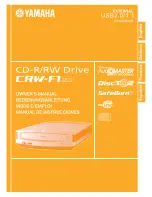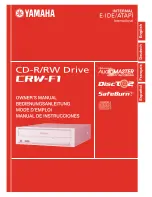
Geo MACRO Drive User and Reference Manual
Appendix A
177
Type of Cable for Encoder Wiring
Low capacitance shielded twisted pair cable is ideal for wiring differential encoders. The better the shield
wires, the better the noise immunity to the external equipment wiring. Wiring practice for shielded cables
is not an exact science. Different applications will present different sources of noise, and experimentation
may be required to achieve the desired results. Therefore, the following recommendations are based upon
some experiences that we at Delta Tau Data Systems have acquired.
If possible, the best cabling to use is a double-shielded twisted pair cable. Typically, there are four pairs
used in a differential encoder's wiring. The picture below shows how the wiring may be implemented for
a typical differential sinusoidal encoder using double shielded twisted pair cable.
SIN+
SIN-
SHIELD
COS+
COS-
SHIELD
INDEX+
INDEX-
SHIELD
ENC PWR
GND
SHIELD
OUTER
SHIELD
EXAMPLE OF DOUBLE SHIELDED
4 TWISTED PAIR CABLE
The shield wires should be tied to ground (Vcc return) at the interpolator end. It is acceptable to tie the
shield wires together if there are not enough terminals available. Keep the exposed wire lengths as close
as possible to the terminals on the interpolator.
Note:
It has been observed that there is an inconsistency in the shielding styles that are
used by different encoder manufacturers.
Be sure to check pre-wired encoders to ensure that the shield wires are not
connected at the encoder’s side. Shield wires should be connected only on one
side of the cable.
If the encoder has shield wires that are connected to the case ground of the
encoder, ensure that the encoder and motor cases are sufficiently grounded. Do
not connect the shield at the interpolator end.
If the encoder has pre-wired double shielded cable that has only the outer shield
connected at the encoder, then connect only the inner shield wires to the
interpolator. Be sure not to mix the shield interconnections.
Summary of Contents for Geo MACRO
Page 2: ......
Page 6: ......
Page 18: ...Geo MACRO Drive User Manual 6 Introduction...
Page 26: ...Geo MACRO Drive User Manual 14 Specifications...
Page 28: ...Geo MACRO Drive User Manual 16 Receiving and Unpacking...
Page 78: ...Geo MACRO Drive User Manual 66 Software Setup...
Page 88: ...Geo MACRO Drive User Manual 76 Setting Up Secondary Encoders...
Page 90: ...Geo MACRO Drive User Manual 78 Setting Up Turbo PMAC Conversion Table...
Page 110: ...Geo MACRO Drive User Manual 98 Setting Up Turbo Motor Operation...
Page 130: ...Geo MACRO Drive User Manual 118 Troubleshooting...
Page 175: ...Geo MACRO Drive User and Reference Manual Absolute Power On Online Commands 163...
Page 176: ...Geo MACRO Drive User Manual 164 Useful Notes...
Page 177: ...Geo MACRO Drive User and Reference Manual Appendix A 165...
Page 182: ...Geo MACRO Drive User Manual 170 Appendix A Cable Drawings...
Page 183: ...Geo MACRO Drive User and Reference Manual Appendix A 171...
Page 184: ...Geo MACRO Drive User Manual 172 Appendix A...
Page 185: ...Geo MACRO Drive User and Reference Manual Appendix A 173...
Page 186: ...Geo MACRO Drive User Manual 174 Appendix A...
Page 187: ...Geo MACRO Drive User and Reference Manual Appendix A 175...
Page 191: ...Geo MACRO Drive User and Reference Manual Appendix A 179...
Page 197: ...Geo MACRO Drive User and Reference Manual Appendix C 185...
















































